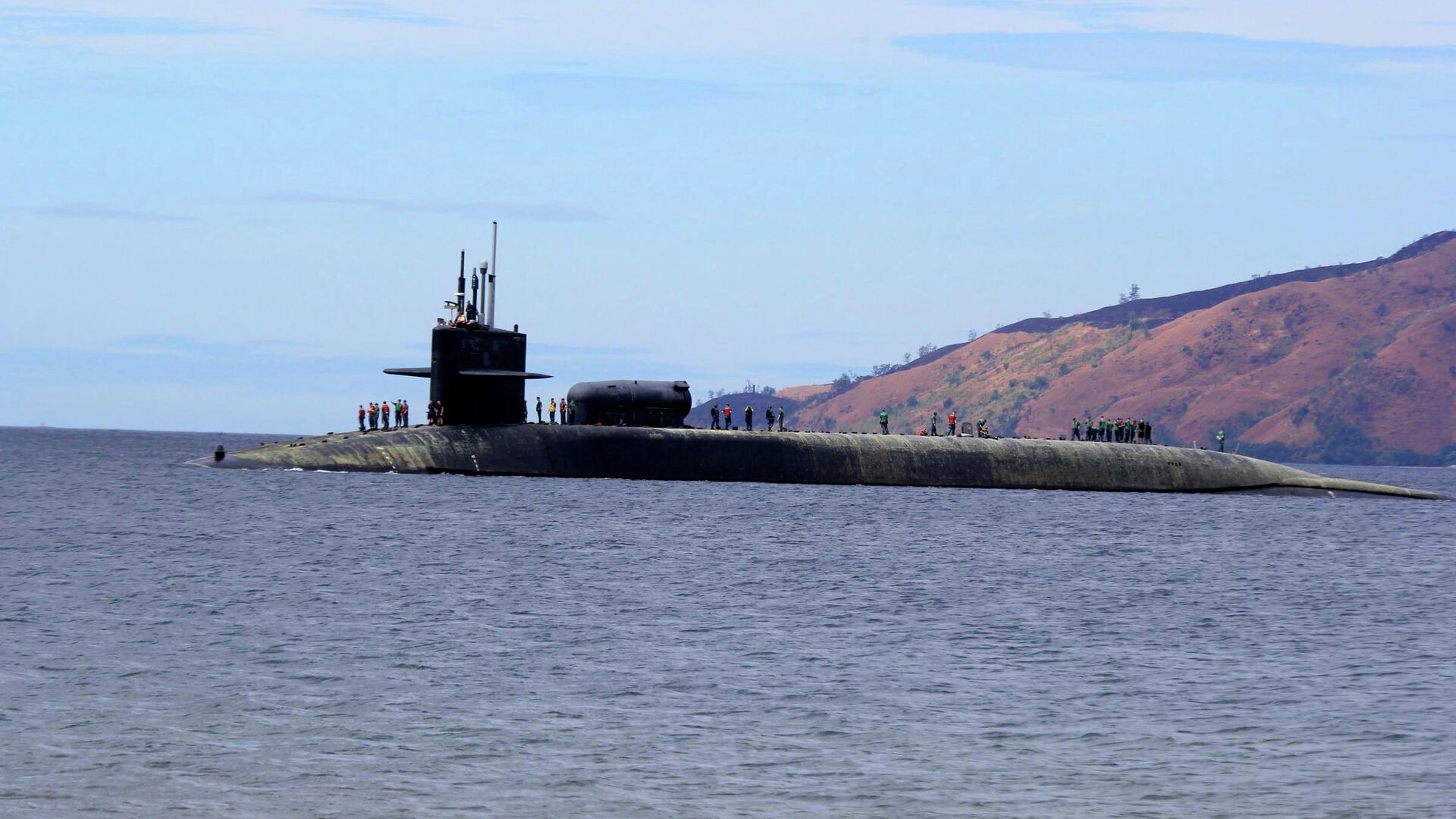US Navy Bares Teeth With Rare Publication of Cruise Missile Submarine’s Cyprus Stopover
23:15 GMT 21.01.2022 (Updated: 20:03 GMT 19.10.2022)

© AP Photo / Jun Dumaguing
Subscribe
The Pentagon has let slip the location of an attack submarine likely to be used in the event of a shooting war, and it’s within range of the eastern Ukrainian border with Russia, where the US has claimed for months a Russian invasion is likely.
In a bit of gunboat diplomacy, the US Navy revealed on Twitter on Wednesday that the USS Georgia had made a “brief personnel stop” in western Cyprus a few days earlier. Since such a situation certainly doesn’t need to be put on blast for the world to see, the only conclusion is that the Navy intended to publicize that this warship is there, now.
Run silent, run deep⚓🇨🇾-🇺🇸
— U.S. Naval Forces Europe-Africa/U.S. Sixth Fleet (@USNavyEurope) January 19, 2022
The Ohio-class guided-missile #Submarine #USSGeorgia (SSGN 729), operating in the U.S. Sixth Fleet area of operations, conducts a brief stop for personnel near Limassol, Cyprus, Jan. 15, 2022. 🌍#USNavy #NavyPartnerships pic.twitter.com/p5vr8QesHs
The USS Georgia is one of four Ohio-class submarines converted by the Navy into cruise missile submarines. Its ballistic missile tubes that once carried nuclear-tipped Trident missiles have been switched out for smaller ones used to hold cruise missiles, dramatically increasing the number of projectiles it can carry from 24 ballistic missiles to 154 Tomahawk cruise missiles. Two of the former ballistic missile slots were set aside, however, to create special tubes for deploying US Navy SEALS special forces teams.
About 1,000 miles to the north - incidentally, the maximum range of a Tomahawk missile - is Ukraine’s eastern border, where the US has postured for months as standing up to a potential Russian invasion of Ukraine. In the unlikely event the United States directly intervened in such a conflict, a warship like the Georgia would be the likely preferred method of doing so: many times in the past, from Afghanistan to Syria, the US has chosen volleys of cruise missiles for its “surgical strikes” instead of risking US service members.
Moscow has said it has no plans to attack Ukraine and that its troop deployments in southern Russia are part of normal drills; however, Russian President Vladimir Putin has noted that the NATO alliance has threatened to cross Russian red lines in the region, which include expanding its membership further east, and to position offensive weapons in Ukraine. However, US President Joe Biden hasn’t said US forces would directly attack Russian troops, only that Russia would be met with punishing sanctions and that Washington would step up its defensive aid to Kiev.
Earlier on Friday, Russian Foreign Minister Sergey Lavrov met with US Secretary of State Antony Blinken in Geneva, Switzerland, in an effort to defuse tensions. No breakthroughs came from the talks, which were described as a voicing of opinions rather than negotiations, but both sides are on "a clear path to understanding,” according to Blinken.
The Navy has done this before, too: in August 2020, the service publicized a stop by the attack submarine USS Seawolf at Norway’s northern port of Tromso, which sits at the southwestern edge of the Barents Sea. It was the first time in five years the Navy published a photo of one of its three Seawolf-class boats; further, the Seawolf is normally deployed in the Pacific and is specifically designed to hunt other submarines underneath sea ice. The incident came just before large Russian Navy drills were scheduled in the Barents Sea.
In October 2017, amid high tensions in Korea in which then-US President Donald Trump threatened the Democratic People’s Republic of Korea (DPRK) with “fire and fury like the world has never seen,” the USS Michigan, another converted Ohio-class like the Georgia, made a very public port call in the South Korean city of Busan.
